Volume 11 | Number 1 | May 2022
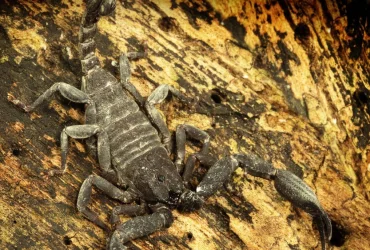 v11i1.276
v11i1.276ISSN: 1800-427X (printed)
eISSN: 1800-427X (online)
DOI:10.47605/tapro.v11i1.276
Submitted date: 10 September 2021
Accepted date: 4 May 2022
Published date: 23 May 2022
Pp. 35–37, Pl. 9.
Rediscovery of Anisogomphus ceylonicus (Odonata: Gomphidae) based on its larva
A.P. Sumanapala*, T. Ranasinghe & D. Sumanapala
*Corresponding author. E-mail: apsumanapala@gmail.com
Anisogomphus ceylonicus (Hagen in Selys, 1878) is one of the rarest of the Sri Lankan Odonata. It was first discovered from Ramboda over 140 years ago based on a female specimen, which was originally described as Gomphus ceylonicus and later assigned to the genus Heliogomphus by F. C. Fraser. Almost a century later, Lieftinck (1971) collected an immature male and its exuvia of a clubtail dragonfly from Rambukpath Oya, 10 miles northwest of Hatton in 1962 and described as Anisogomphus solitaris. However, Bedjanič & van der Poorten (2013) recognized that H. ceylonicus is conspecific with A. solitaris, and thus reassigned it to the genus Anisogomphus. Since the discovery of the species, only these two records have ever been documented, despite odonatological surveys and numerous biodiversity explorations conducted on the island.
Section Editor: Tosaphol S. Keetapithchayakul
eISSN: 1800-427X (online)
DOI:10.47605/tapro.v11i1.276
Submitted date: 10 September 2021
Accepted date: 4 May 2022
Published date: 23 May 2022
Pp. 35–37, Pl. 9.
Rediscovery of Anisogomphus ceylonicus (Odonata: Gomphidae) based on its larva
A.P. Sumanapala*, T. Ranasinghe & D. Sumanapala
*Corresponding author. E-mail: apsumanapala@gmail.com
Anisogomphus ceylonicus (Hagen in Selys, 1878) is one of the rarest of the Sri Lankan Odonata. It was first discovered from Ramboda over 140 years ago based on a female specimen, which was originally described as Gomphus ceylonicus and later assigned to the genus Heliogomphus by F. C. Fraser. Almost a century later, Lieftinck (1971) collected an immature male and its exuvia of a clubtail dragonfly from Rambukpath Oya, 10 miles northwest of Hatton in 1962 and described as Anisogomphus solitaris. However, Bedjanič & van der Poorten (2013) recognized that H. ceylonicus is conspecific with A. solitaris, and thus reassigned it to the genus Anisogomphus. Since the discovery of the species, only these two records have ever been documented, despite odonatological surveys and numerous biodiversity explorations conducted on the island.
Section Editor: Tosaphol S. Keetapithchayakul
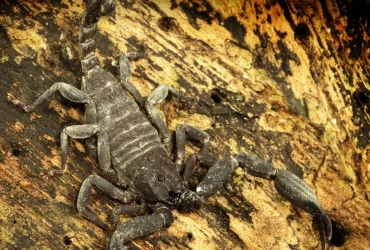 v11i1.275
v11i1.275ISSN: 1800-427X (printed)
eISSN: 1800-427X (online)
DOI:10.47605/tapro.v11i1.275
Submitted date: 21 August 2021
Accepted date: 13 January 2022
Published date: 23 May 2022
Pp. 33–34
Hersilia sp. feeding on Scolopendra sp.
R. Gazdar*, P. Joshi, A. Shinde & V. Kulkarni
*Corresponding author. E-mail: roozbehgazdar@gmail.com
Spiders are efficient hunters that prey on a variety of invertebrates and vertebrates. They rely on strategies varying from the use of toughened silk to venom. The genus Hersilia Audouin 1826 is called two-tailed spiders due to its characteristic long spinnerets. It is distributed across the Afrotropical, Oriental and Australasian realms. Currently there are five species known to occur in India: Hersilia savignyi Lucas 1836, H. sumatrana Thorell 1890, H. tibialis Baehr & Baehr 1993, H. orvakalensis Javed, Foord & Tampal 2010, and H. longivulva Sen, Saha & Raychaudhuri 2010.
Section Editor: Manju Siliwal
eISSN: 1800-427X (online)
DOI:10.47605/tapro.v11i1.275
Submitted date: 21 August 2021
Accepted date: 13 January 2022
Published date: 23 May 2022
Pp. 33–34
Hersilia sp. feeding on Scolopendra sp.
R. Gazdar*, P. Joshi, A. Shinde & V. Kulkarni
*Corresponding author. E-mail: roozbehgazdar@gmail.com
Spiders are efficient hunters that prey on a variety of invertebrates and vertebrates. They rely on strategies varying from the use of toughened silk to venom. The genus Hersilia Audouin 1826 is called two-tailed spiders due to its characteristic long spinnerets. It is distributed across the Afrotropical, Oriental and Australasian realms. Currently there are five species known to occur in India: Hersilia savignyi Lucas 1836, H. sumatrana Thorell 1890, H. tibialis Baehr & Baehr 1993, H. orvakalensis Javed, Foord & Tampal 2010, and H. longivulva Sen, Saha & Raychaudhuri 2010.
Section Editor: Manju Siliwal
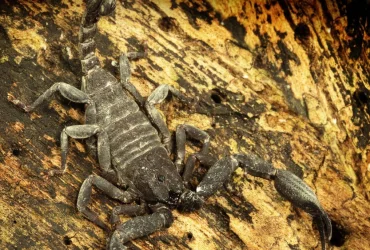 v11i1.274
v11i1.274ISSN: 1800-427X (printed)
eISSN: 1800-427X (online)
DOI:10.47605/tapro.v11i1.274
Submitted date: 31 March 2022
Accepted date: 10 May 2022
Published date: 23 May 2022
Pp. 25–32, pls. 6–8.
FIRST CONFIRMED DISTRIBUTION RECORDS OF Dendrelaphis bifrenalis (BOULENGER, 1890) (REPTILIA: COLUBRIDAE) IN INDIA, WITH A REVISED KEY TO THE SOUTHERN INDIAN FORMS
R. Aengals, S.R. Ganesh, P.G.S. Sethy, J. Samson Kirubakaran, M. Ahamed Jerith, M. Satheeshkumar, A. Thanigaivel & Gernot Vogel*
*Corresponding author. E-mail: Gernot.Vogel@t-online.de
Abstract
We report for the first time an accurate record of Dendrelaphis bifrenalis (Boulenger, 1890), a colubrid snake thus far considered endemic to Sri Lanka, from southern India. Our data is based on a voucher specimen collected from Shenbagathoppu, Srivilliputhur, Tamil Nadu, India. We also refer a paratype of D. girii from Sirumalai and a voucher specimen previously identified as D. girii from Meghamalai (both from Tamil Nadu, India) to D. bifrenalis. Additionally, based on congruence of diagnostic features, observed but uncollected specimens reported from the Eastern Ghats in Jawadi, Bilgiri and the Tada (or Kambakkam) hills are herein referred to D. bifrenalis. The Indian records of D. bifrenalis available thus far indicate its occurrence in mixed deciduous forests of mid-hills. Our examination of the historical (in 1890s) specimen that formed the sole basis of the record of D. bifrenalis in India, from “Trevandrum, Travancore” in the wet zone of the Western Ghats reveals that it is in fact D. girii. We conclude by drawing parallels in distribution patterns between the Western Ghats-endemic D. girii and the corresponding Sri Lankan wet zone endemic species D. wickrorum, whose description enabled a proper identification of the Sri Lankan and Indian dry zone populations as D. bifrenalis.
Key words : deciduous forests, Eastern Ghats, forebody stripes, Shenbagathoppu, Sri Lanka
Section Editor: Thasun Amarasinghe
eISSN: 1800-427X (online)
DOI:10.47605/tapro.v11i1.274
Submitted date: 31 March 2022
Accepted date: 10 May 2022
Published date: 23 May 2022
Pp. 25–32, pls. 6–8.
FIRST CONFIRMED DISTRIBUTION RECORDS OF Dendrelaphis bifrenalis (BOULENGER, 1890) (REPTILIA: COLUBRIDAE) IN INDIA, WITH A REVISED KEY TO THE SOUTHERN INDIAN FORMS
R. Aengals, S.R. Ganesh, P.G.S. Sethy, J. Samson Kirubakaran, M. Ahamed Jerith, M. Satheeshkumar, A. Thanigaivel & Gernot Vogel*
*Corresponding author. E-mail: Gernot.Vogel@t-online.de
Abstract
We report for the first time an accurate record of Dendrelaphis bifrenalis (Boulenger, 1890), a colubrid snake thus far considered endemic to Sri Lanka, from southern India. Our data is based on a voucher specimen collected from Shenbagathoppu, Srivilliputhur, Tamil Nadu, India. We also refer a paratype of D. girii from Sirumalai and a voucher specimen previously identified as D. girii from Meghamalai (both from Tamil Nadu, India) to D. bifrenalis. Additionally, based on congruence of diagnostic features, observed but uncollected specimens reported from the Eastern Ghats in Jawadi, Bilgiri and the Tada (or Kambakkam) hills are herein referred to D. bifrenalis. The Indian records of D. bifrenalis available thus far indicate its occurrence in mixed deciduous forests of mid-hills. Our examination of the historical (in 1890s) specimen that formed the sole basis of the record of D. bifrenalis in India, from “Trevandrum, Travancore” in the wet zone of the Western Ghats reveals that it is in fact D. girii. We conclude by drawing parallels in distribution patterns between the Western Ghats-endemic D. girii and the corresponding Sri Lankan wet zone endemic species D. wickrorum, whose description enabled a proper identification of the Sri Lankan and Indian dry zone populations as D. bifrenalis.
Key words : deciduous forests, Eastern Ghats, forebody stripes, Shenbagathoppu, Sri Lanka
Section Editor: Thasun Amarasinghe
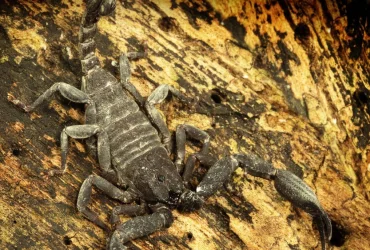 v11i1.273
v11i1.273ISSN: 1800-427X (printed)
eISSN: 1800-427X (online)
DOI:10.47605/tapro.v11i1.273
Submitted date: 15 November 2021
Accepted date: 21 February 2022
Published date: 23 May 2022
Pp. 12–24, pls. 4–5.
A NEW SPECIES OF THE GENUS Oligodon FITZINGER, 1826 (REPTILIA: COLUBRIDAE) FROM SOUTHERN LAOS
Patrick David*, Sjon Hauser & Gernot Vogel
*Corresponding author. E-mail: patrick.david@mnhn.fr
Abstract
A new species of the genus Oligodon Fitzinger, 1826, is described based on two specimens originating from Champasak Province in southern Lao PDR. This species differs from congeners occurring in the Indochinese Region by possessing 15 dorsal scale rows at midbody, an unforked hemipenis, an entire cloacal plate, a relatively low number of ventral plates (150–159), and a dorsal pattern made of 29–30 pale (cream in life or pale yellowish-brown in preservative) crossbands on the body that are narrowly edged with blackish-brown. We compare the new species with other species of the Indochinese Peninsula and China that also have 15 dorsal scale rows, especially O. inornatus (Boulenger, 1914) and O. kampucheaensis Neang, Grismer & Daltry, 2012. Finally, we provide an updated list of the Oligodon species of Laos and an identification key to these species.
Key words : Distribution, Indochinese Region, Kukri, Oligodon inornatus, Southeast Asia, taxonomy
Section Editor: Thasun Amarasinghe
LSID:urn:lsid:zoobank.org
eISSN: 1800-427X (online)
DOI:10.47605/tapro.v11i1.273
Submitted date: 15 November 2021
Accepted date: 21 February 2022
Published date: 23 May 2022
Pp. 12–24, pls. 4–5.
A NEW SPECIES OF THE GENUS Oligodon FITZINGER, 1826 (REPTILIA: COLUBRIDAE) FROM SOUTHERN LAOS
Patrick David*, Sjon Hauser & Gernot Vogel
*Corresponding author. E-mail: patrick.david@mnhn.fr
Abstract
A new species of the genus Oligodon Fitzinger, 1826, is described based on two specimens originating from Champasak Province in southern Lao PDR. This species differs from congeners occurring in the Indochinese Region by possessing 15 dorsal scale rows at midbody, an unforked hemipenis, an entire cloacal plate, a relatively low number of ventral plates (150–159), and a dorsal pattern made of 29–30 pale (cream in life or pale yellowish-brown in preservative) crossbands on the body that are narrowly edged with blackish-brown. We compare the new species with other species of the Indochinese Peninsula and China that also have 15 dorsal scale rows, especially O. inornatus (Boulenger, 1914) and O. kampucheaensis Neang, Grismer & Daltry, 2012. Finally, we provide an updated list of the Oligodon species of Laos and an identification key to these species.
Key words : Distribution, Indochinese Region, Kukri, Oligodon inornatus, Southeast Asia, taxonomy
Section Editor: Thasun Amarasinghe
LSID:urn:lsid:zoobank.org
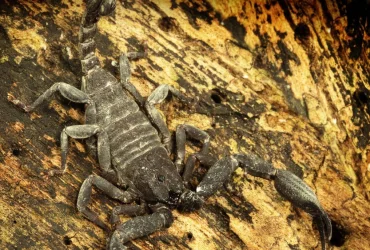 v11i1.272
v11i1.272ISSN: 1800-427X (printed)
eISSN: 1800-427X (online)
DOI:10.47605/tapro.v11i1.272
Submitted date: 24 November 2021
Accepted date: 11 February 2022
Published date: 23 May 2022
Pp. 4–11, pls. 1–3.
ON THE OCCURRENCE OF Scorpiops longimanus (POCOCK, 1893) (ARACHNIDA: SCORPIOPIDAE) IN MIZORAM, NORTHEAST INDIA
Fanai Malsawmdawngliana, Mathipi Vabeiryureilai, Vanlal Siammawii, Lal Muansanga, Gospel Zothanmawia Hmar, Ht Decemson & Hmar Tlawmte Lalremsanga*
*Corresponding author. E-mail: htlrsa@yahoo.co.in
Abstract
In this study, we confirm the occurrence of the tropical forest scorpion Scorpiops longimanus (Pocock, 1893) in Mizoram, India based on specimens collected from 13 different localities within the state. The total length of the animal was found to range from 42.22 mm up to 65.16 mm. The number of trichobothria on the ventral surface of the pedipalp patella and that of the external face alternates between 10–11 and 18–19, respectively. The pectines showed dissimilarities in the structure of the lamellae and in the number of teeth. We generated the first molecular data for the species and performed a maximum likelihood phylogenetic analysis using the partial mitochondrial 16S rRNA gene which showed the formation of a distinct clade of S. longimanus. The uncorrected k2p distance showed an intraspecific genetic variation of 2.9% among the species studies.
Key words : Distribution, molecular phylogeny, Neoscorpii, new record, Orthosterni, Scorpiones
Section Editor: František Kovařík
eISSN: 1800-427X (online)
DOI:10.47605/tapro.v11i1.272
Submitted date: 24 November 2021
Accepted date: 11 February 2022
Published date: 23 May 2022
Pp. 4–11, pls. 1–3.
ON THE OCCURRENCE OF Scorpiops longimanus (POCOCK, 1893) (ARACHNIDA: SCORPIOPIDAE) IN MIZORAM, NORTHEAST INDIA
Fanai Malsawmdawngliana, Mathipi Vabeiryureilai, Vanlal Siammawii, Lal Muansanga, Gospel Zothanmawia Hmar, Ht Decemson & Hmar Tlawmte Lalremsanga*
*Corresponding author. E-mail: htlrsa@yahoo.co.in
Abstract
In this study, we confirm the occurrence of the tropical forest scorpion Scorpiops longimanus (Pocock, 1893) in Mizoram, India based on specimens collected from 13 different localities within the state. The total length of the animal was found to range from 42.22 mm up to 65.16 mm. The number of trichobothria on the ventral surface of the pedipalp patella and that of the external face alternates between 10–11 and 18–19, respectively. The pectines showed dissimilarities in the structure of the lamellae and in the number of teeth. We generated the first molecular data for the species and performed a maximum likelihood phylogenetic analysis using the partial mitochondrial 16S rRNA gene which showed the formation of a distinct clade of S. longimanus. The uncorrected k2p distance showed an intraspecific genetic variation of 2.9% among the species studies.
Key words : Distribution, molecular phylogeny, Neoscorpii, new record, Orthosterni, Scorpiones
Section Editor: František Kovařík
Hubungi Kami
The ultimate aim of the journal is to provide an effective medium for communication of the latest and best scientific information.
Copyright © 2020 Taprobanica. All Rights Reserved
Jasa Pembuatan Website by IKT




